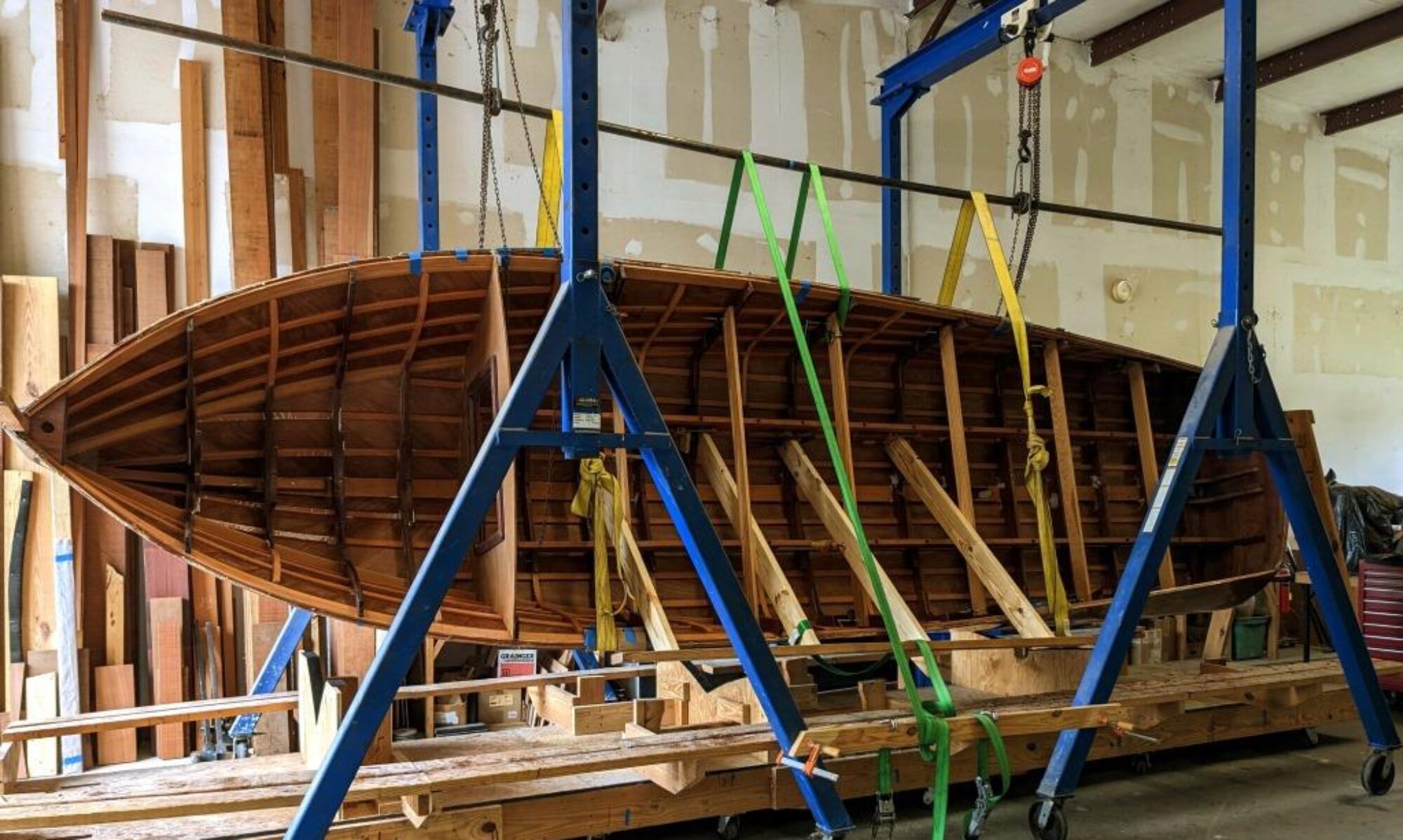
In my last post I said I would tell you more about making the hatch in the waterproof bulkhead, and finishing it. Well, I’m still waiting for some of the hardware, so it’s time to move on and we’ll come back to the hatch later.
Time to build the Stem of the boat! I decided to laminate this stem because it’s easier and stronger than the traditional method of sawing it out of solid lumber pieces and bolting them together. Laminating is just gluing together multiple layers to produce a larger piece. It’s also used as an alternative to steam bending wood. We’re going to do a lot of laminating on this boat. So let’s get started.

Remember the lofting board? We’re going to use it as our form for the stem. We drew it out full size, so if we glue to the lines we drew, we should have a perfect fit, right? Yep! Take a look at the image and see if you can find the lines we need. You might have to blow it up a bit. Just click on it and zoom in.
To make the form, you “toe the line” of the inner stem with steel angles, padded with wood for clamping. After testing, I found that I had to use 5/32″ thick strips to get them to bend to that sharp curve easily. When your saw blade cuts away 4/32″ each time for it’s kerf, you can see that you create a lot of waste. I had to start with almost twice as much wood to end up with the 21 strips I needed! Oh well…

Once I had all the strips made, I did a dry run of clamping them up, just to make sure it would work the way I thought it would. This told me I would need to get out more clamps, and that I had enough strips to get the thickness I needed.
Finally it was time to spread the glue and get it clamped up. Always be sure to choose a pretty strip for the inside layer since it’s the one that will show on the inside of the boat! Next time we’ll talk about cleaning up the blank and shaping it.

